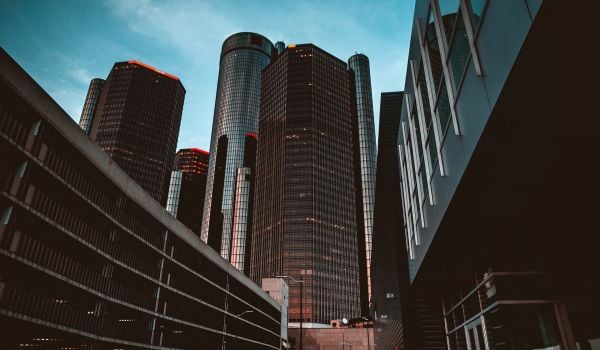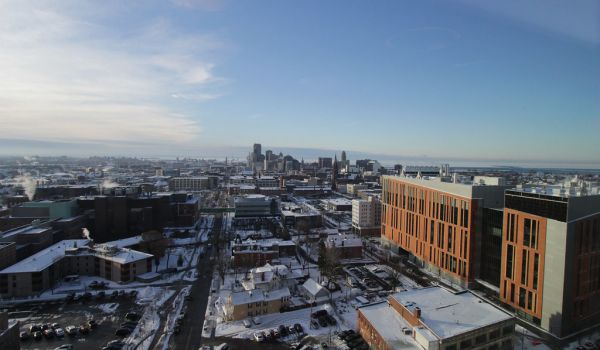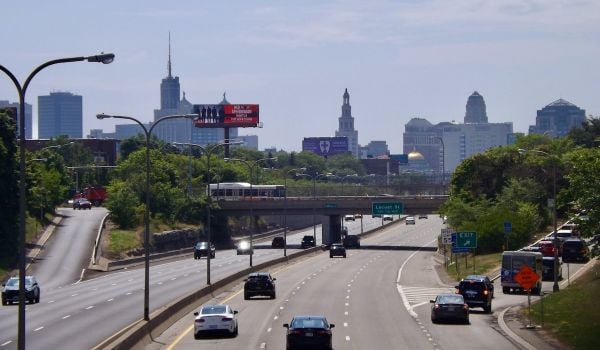It has long been an accepted fact that older industrial cities in the Rust Belt of the Northeast and Midwest are on an irreversible downward trajectory due to de-industrialization and suburbanization. While a handful of the most high-profile cities in the region have rebounded through creative-class strategies, attracting artists may not be a realistic plan for places like Mankato, Minnesota and Hagerstown, Maryland. And there has been no coordinated national strategy to address these cities’ shared concerns.
Enter the Northeast-Midwest Institute, a D.C.- based non-profit, and its two-day Revitalizing Older Cities conference on Capitol Hill, which focused on the role of the federal government in assisting these cities. Of course, this being a bi-partisan conference associated with the Northeast-Midwest Congressional and Senate Coalitions, the audience was subjected to the nonsensical musings of a Republican co-keynote speaker, Rep. Mike Turner of Ohio, the former mayor of Dayton. “Leverage that story — that quilting of the fabric of your community,” he urged the attendees. Now that’s some practical advice! “Remove blighting influences that can attract other jobs,” he continued. With no more George W. Bush to say the opposite of what he means, I suggest Slate start a “Turnerisms,” to replace its Bushisms.
To be fair, Turner’s Democratic counterpart, Rep. Brian Higgins, who represents much of Buffalo, was prone to preposterous exhortations as well. Riffing on the importance of a city’s “self-confidence,” he claimed that the world’s leading architects took projects in Buffalo in the early 20th century because they were attracted to the city’s attitude, as opposed to, say, the fact that they happened to be offered commissions there.
That said, there were some instructive moments. Higgins, for instance, argued that investment in regional rail would help enliven economies such as Buffalo’s (ergo the need to obtain such funding in the stimulus legislation and the upcoming Surface Transit Reauthorization). But he contended that local mass transit has limited utility, noting that a light rail line in Buffalo “goes from nowhere to nowhere,” and has not lived up to its promise. Instead, he actually argued that the ease of driving, since abandoned cities such as Buffalo do not suffer from traffic congestion, is the competitive advantage they offer. Well, if you don’t care about global warming, that might make sense. But Higgins is a co-sponsor of a bill that, while modest, probably would help Buffalo more than self-confidently proclaiming its ease of driving, the Neighborhood Revitalization Program, which will create a program in HUD to target cities and inner-ring suburbs that have lost population and have large-scale property vacancy, and provide funds to create green spaces and other sustainability projects.
Other speakers laid out a federal agenda for older industrial cities, with some some obviously good suggestions and some trendy, questionable ones. Among the stronger proposals put forth by Jennifer Vey of the Brookings Institution were more money for community colleges and an expanded Earned Income Tax Credit. The EITC would immediately inject money into responsible hands in disadvantaged communities, so you cannot go wrong there. Community colleges are terrific engines of economic growth and mobility. They can lead to innovative new businesses in their vicinity and create a more educated workforce. Creating an infrastructure bank, as Vey recommends, would permanently support the needed infrastructure spending in inner cities. And, her proposal to create sustainability challenge contracts to help link housing and transportation sounds like a good way to support smart growth and to drive investment towards the denser urban core. Among the more suspect suggestions were creating a nebulous “office of educational entrepreneurship and innovation,” and developing “energy discovery innovation institutes.” Energy and educational innovation are great buzzwords, but I think cities need cash, not more abstract ideas.
A staffer for Rep. Jim Oberstar (D-MN), the House Transportation Committee chair, defended the unimpressive breakdown of transportation funding in the stimulus, which gave nearly three times as much to roads as mass transit. She argued that the stimulus funding had to go to shovel-ready projects such as repairs, so the opportunities mirror the transit infrastructure we already have. Instead progressives should set their sights on the Transit bill later this year as the opportunity to truly alter the built landscape. I’ll believe it when I see it.

Ben Adler is a journalist in New York. He is a former reporter for Grist, The Nation, Newsweek and Politico, and he has written for The New York Times, The Atlantic, The Guardian and The New Republic.















